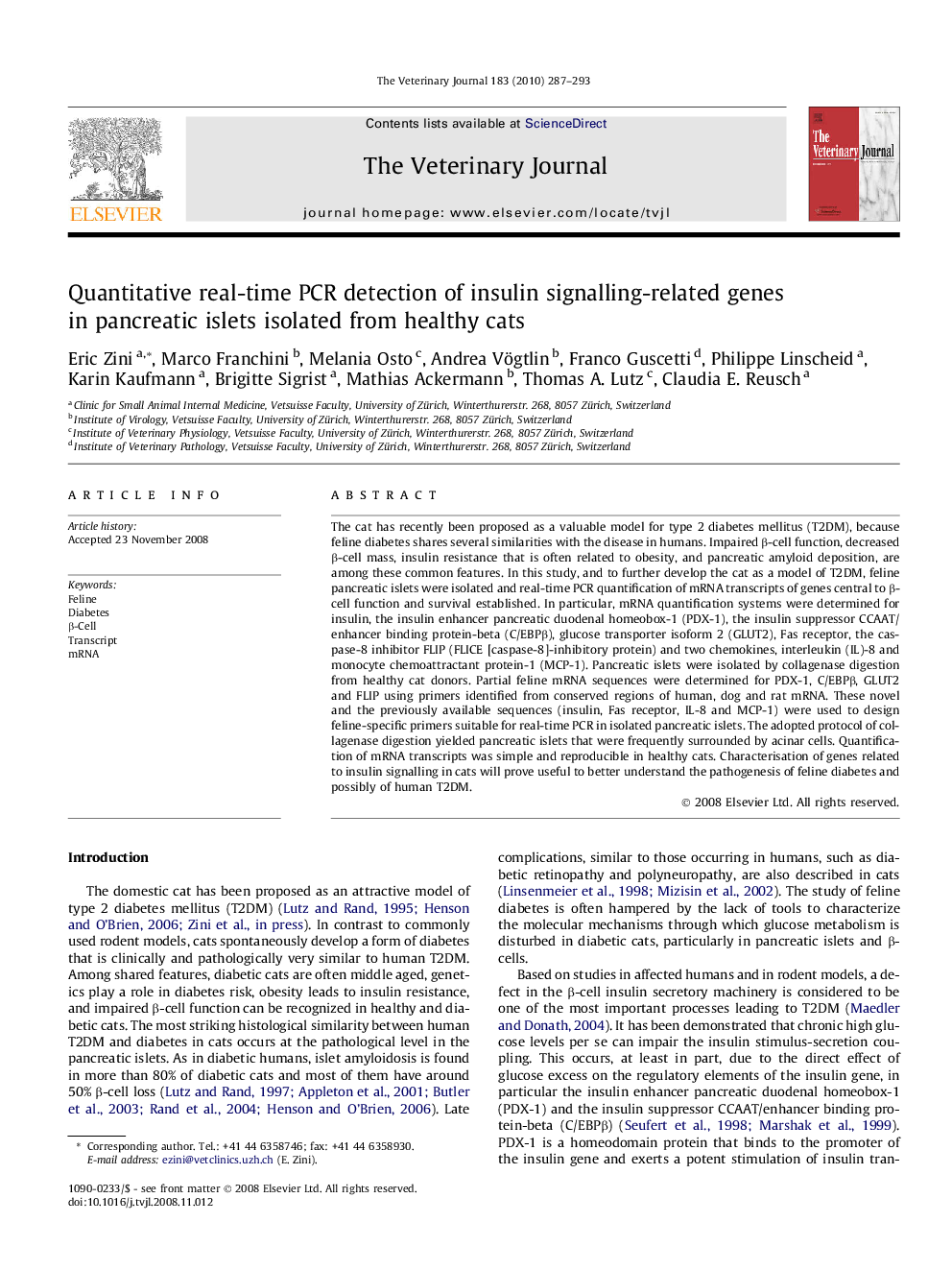| Article ID | Journal | Published Year | Pages | File Type |
|---|---|---|---|---|
| 2465337 | The Veterinary Journal | 2010 | 7 Pages |
The cat has recently been proposed as a valuable model for type 2 diabetes mellitus (T2DM), because feline diabetes shares several similarities with the disease in humans. Impaired β-cell function, decreased β-cell mass, insulin resistance that is often related to obesity, and pancreatic amyloid deposition, are among these common features. In this study, and to further develop the cat as a model of T2DM, feline pancreatic islets were isolated and real-time PCR quantification of mRNA transcripts of genes central to β-cell function and survival established. In particular, mRNA quantification systems were determined for insulin, the insulin enhancer pancreatic duodenal homeobox-1 (PDX-1), the insulin suppressor CCAAT/enhancer binding protein-beta (C/EBPβ), glucose transporter isoform 2 (GLUT2), Fas receptor, the caspase-8 inhibitor FLIP (FLICE [caspase-8]-inhibitory protein) and two chemokines, interleukin (IL)-8 and monocyte chemoattractant protein-1 (MCP-1). Pancreatic islets were isolated by collagenase digestion from healthy cat donors. Partial feline mRNA sequences were determined for PDX-1, C/EBPβ, GLUT2 and FLIP using primers identified from conserved regions of human, dog and rat mRNA. These novel and the previously available sequences (insulin, Fas receptor, IL-8 and MCP-1) were used to design feline-specific primers suitable for real-time PCR in isolated pancreatic islets. The adopted protocol of collagenase digestion yielded pancreatic islets that were frequently surrounded by acinar cells. Quantification of mRNA transcripts was simple and reproducible in healthy cats. Characterisation of genes related to insulin signalling in cats will prove useful to better understand the pathogenesis of feline diabetes and possibly of human T2DM.
